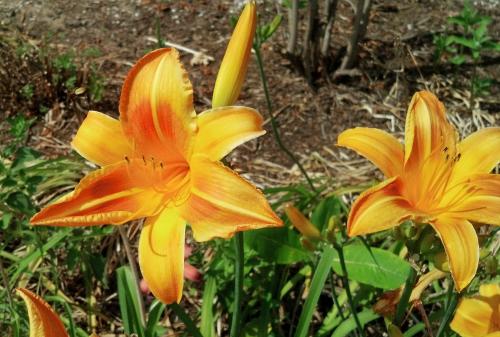Does your definition of “local foods” include foraging for wild edibles?
Foraging for local wild foods can be fun and instructive outdoor activity for the whole family. It is a free way to add nutritional foods to your diet.
There are many benefits that can be received from foraging for wild edible fruits and plants. One of these benefits is the opportunity to introduce yourself and your family to a greater variety of seasonally available foods. They are free, probably not treated with pesticides and other chemicals, and nutritious. The practice of foraging and picking your own edibles is often referred to as “wildcrafting.” Foraging for your own edibles has the added benefit of exercise and being outdoors. Mushrooms are a popular item on the Michiganders wild foods grocery list. Michigan State University Extension has a bulletin that can help you to identify wild mushrooms. Morels are available in May and later serious hunters start looking for Boletus.
A few words of caution before you set out to gather wild food: Make sure you are familiar with the plant and the area. If you do not know what wild foods are safe, you could pick poison. If you are on private property, you need to get permission from the land-owner first. Be thoughtful and do not forage in public parks and nature preserves. Avoid taking endangered species. Always pick ripe fruit and be sure you know the difference between look-a-likes. The same rules are especially important when mushroom hunting and harvesting greens.
Nuts and berries are some of the most common, abundant and easiest foods to forage for in the temperate forest. These include: black walnuts, hickory nuts (filberts), chestnuts, beach nuts and butternuts; blackberries, raspberries, mulberries, grapes, crabapples, and blueberries. There are many more edible fruits and berries; getting a good field guide can help you find the best ones and steer clear of harmful ones.
 Some wild foods can be purchased in specialty sections of grocery stores, specialty stores, and at some farmer’s markets. If you are unsure about gathering edible wild plants, and want to give them a try, check in these locations for some pre-harvested items. Dandelions, for example, are often a component of “spring greens” salad mixes. Edible flowers are available in the produce sections of several larger grocery chains where they sell fresh herbs and can include cultivated versions of otherwise wild plants. Mushroom varieties are often sold dried and packaged.
Some wild foods can be purchased in specialty sections of grocery stores, specialty stores, and at some farmer’s markets. If you are unsure about gathering edible wild plants, and want to give them a try, check in these locations for some pre-harvested items. Dandelions, for example, are often a component of “spring greens” salad mixes. Edible flowers are available in the produce sections of several larger grocery chains where they sell fresh herbs and can include cultivated versions of otherwise wild plants. Mushroom varieties are often sold dried and packaged.
Right now, a couple of edible wild plants that are easy to identify and readily available are: purslane (Portulaca oleracea), raspberries, and daylily (Hemerocallis fulva) blossoms. Purslane is frequently viewed as a weedy problem in lawns but it is a very edible green. Daylilies are an essential ingredient in Chinese cuisine such as hot and sour soup and moo shoo pork. Found in many places, daylilies can be eaten fresh or blanched and dried for future culinary uses.
As previously stated, having good field guides will make your foraging easier and more successful. They will also help you to avoid some of the pitfalls of foraging in the wild, for example, how to identify poison ivy and other potential hazards. Must have basics include: Wild Berries and Fruits Field Guide by Teresa Marrone , May is Morel Month, MSUE bulletin E- 2755, and A Field Guide to Edible Wild Plants: Eastern and Central North America by Peterson Field Guides. In an article by Edible Michiana News they suggest using a Smartphone app for the tech savvy. Use common sense with the introduction of new foods. It is recommended that new foods be tested in small quantities and then eaten in moderation to avoid potential unpleasant or ill side-effects.



 Print
Print Email
Email




